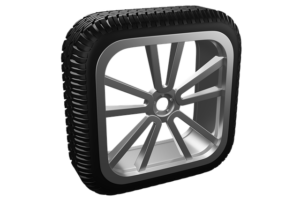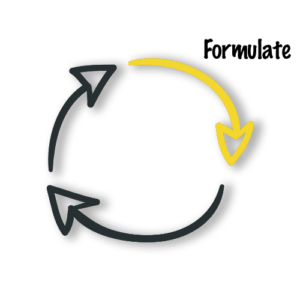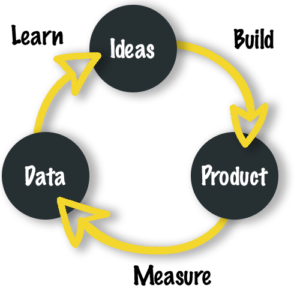
Just another product without demand
Introduction
Working on a product for months, only to find out there is no demand for it. Unfortunately, there are still far too many startups and companies facing this problem. I have also encountered this problem, but I learned that time & resource waste can be prevented.
The solution: validated learning. Validated learning is about testing demand in the market. By learning validated you work iteratively and regularly test the demand in the market. This allows you to continuously test demand for the concept or functionality.
Validated learning always has a positive outcome. If there is no demand, you have learnt and haven’t lost any time on all kinds of functionalities. If there is demand, you know that you are on the right track.
The term validated learning was proposed in 2011 by Eric Ries, author of the book The Lean Startup. The term is widely used on the web through analytics, but it is also applicable outside this sector.

- Formulate a hypothesis
A hypothesis is something you believe/assume about your target audience and you want to test if this is true. A good hypothesis is specific, measurable and demonstrable. Good questions are:
- What’s my assumption?
- How am I going to measure this assumption?
- Can my assumption be concluded with a simple true or false?
Example:
- Assumption: I think people want to know more about validated learning than how much an app costs to make
- Measure: I am going to write a blog post and measure the interaction (number of views + average interaction time)
- Conclusion: By comparing the measurement results with the previous blog post, which explains the costs of an app, I can conclude whether my assumption is correct or not
It is possible to test multiple hypotheses. However, it is recommended to test each hypothesis step by step. This way you get accurate data per hypothesis and there is less influence of external factors on the measurements. An implementation of one hypothesis can have influence the results of another hypothesis.

- Run the experiment
Perform the experiment with the least amount of effort & investment. It’s about creating an MVP that allows you to test your hypothesis/hypotheses as quickly as possible.

- Analyse the result
By analysing the result, you can draw a conclusion whether your hypothesis is true. Based on this conclusion, you can conclude whether you are on the right track, or whether you better invest your time and energy in other concepts or functionalities.
- Return to step 1
Go back to step 1 and repeat the 3 steps above. You have now built, measured and learned something (your hypothesis is correct or it isn’t). We call this the build-meet-learn (BML) loop.

By applying this loop, you continuously validate your product to meet the supply and demand of the current market. Do not create products that are not in demand!
Conclusion
Formulate your hypothesis, run the experiment and analyse the result. Make sure you don’t waste time and energy developing products or functionalities for which there is no demand. Be guided by data-driven choices, and not by unsubstantiated assumptions.

Justin Fransen Author
Thank you for reading this article
Do you have any questions, any tips or any adjustments about this article? Let me know in the comments! I'll try to respond as soon as possible.
Did you like this article?
It would mean a lot to me if you would join my testing program. It is free and it always will be. I just love to hear your feedback for the apps I am planning to create!